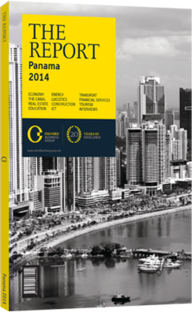OBG talks to Rubens Amaral Jr, CEO, Banco Latinoamericano de Comercio Exterior

Interview: Rubens Amaral Jr
How difficult will it be to wean Panama’s economy off heavy public spending?
RUBENS AMARAL JR: Panama has benefitted from its infrastructure investments and from having one of the region’s most open economies. We have seen important investment flows coming from different countries for sectors such as commercial real estate, logistics, distribution and retail. Panama has also been the recipient of investments from neighbouring countries such as Colombia and Venezuela. The government is making it clear that it wants to lead the transformation of the economy by providing the supporting infrastructure and enabling the private sector to take advantage of this and build on the country’s position as a regional hub.
The Panama Canal expansion project has created new opportunities for the logistics and maritime sectors. The promotion of the Hub of Americas concept at the Tocumen International Airport has also boosted the country’s regional connectivity, and the government is supporting this project through the expansion of the airport. By laying out the infrastructure necessary for companies to continue to grow and invest, the government has demonstrated that it has a clear plan for the future.
The question no one can fully answer is whether all the slack from the fall in public investment can be picked up. I feel the private sector will take up an important portion of that, but there will be a transition period. We have become accustomed to seeing Panama grow at 8-12% per year, rates that have been sustained only by China. I believe we will see a more sustainable growth rate of 5-6% in the future.
What impact will the expansion of Latin American banks into regional markets have?
AMARAL: We have seen quite a few acquisitions by Colombian banks, so this could be a good case study. Colombia is a very important market in the region, with strong financial institutions. These banks are always exploring how to further grow their business, and although there is space to grow in Colombia in the medium term, in the short term they have identified opportunities to expand elsewhere.
In general the process follows certain phases: first, to follow and support clients; second, to grow locally and expand their core retail business in the new market; and third, to build a regional platform.
When one bank makes inroads, its competitors are inclined to follow, and we have seen a number of Colombian banks becoming very important within Central America. Chilean banks are following a similar strategy, expanding into Colombia, and will soon do the same in Peru. Over time we will see the emergence of regional players, and at that point you may ask, is there room for more consolidation? Perhaps. But we need to wait and see how the financial landscape will look like in the region. One point is sure: There is still much room for growth.
Will the raft of new free trade agreements (FTAs) increase intra-regional trade?
AMARAL: Latin America is a region that has an emphasis and dependence on trade. In that context, these FTAs are crucial, in that they expand the level of access to other markets.
Looking at the bigger picture, as China becomes more expensive as a manufacturing base, companies are looking towards Latin America. Cost is not the only factor – access and distance to primary markets are also important. Mexico has done well out of this, and in the textiles sector Honduras has benefitted. Latin America has at times been incorrectly characterised as a region driven by commodity exports. Normally, a country’s trade flows grow at three to four times the underlying GDP growth rate.
Trade and FTAs are critical for the growth of the region. They open up new markets, force discussions on economic openness and competitiveness – improving productivity internally – and create jobs.
You have reached the limit of premium articles you can view for free.
Choose from the options below to purchase print or digital editions of our Reports. You can also purchase a website subscription giving you unlimited access to all of our Reports online for 12 months.
If you have already purchased this Report or have a website subscription, please login to continue.

